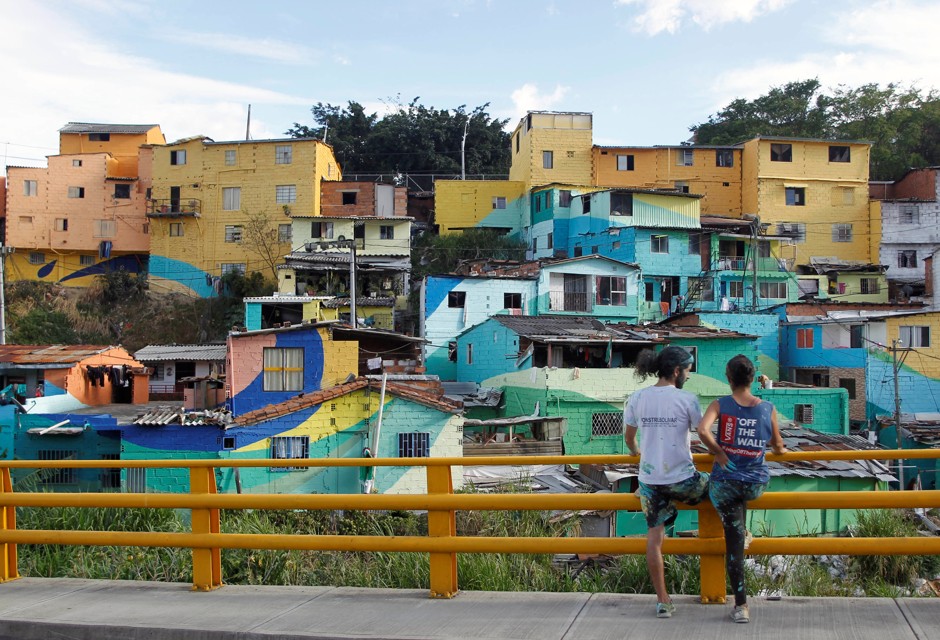
A mural project in Medellín, Colombia, which has used cultural projects to help recover from years of extreme violence. Photo by Fredy Builes/Reuters.
Culture, which includes “art and literature, lifestyles, ways of living together, value systems, traditions, and beliefs,” is an overlooked element in rebuilding cities ravaged by disasters, war, and other forms of urban distress, according to a joint World Bank–UNESCO report.
“While culture is essential both as an asset and a tool for city reconstruction and recovery, it is often left out or given limited consideration as part of these efforts,” said Laura Tuck, vice-president for sustainable development at the World Bank, in a statement.
Investing in cultural institutions, spaces, and heritage can help build bridges between sparring communities in post-conflict urban areas and make disaster recovery quick, sustainable, and more effective. The authors argue that major cultural investments early in the reconstruction process will eventually pay off by making the city more attractive to investment and tourism, fueling economic growth.
The report also contains a roadmap for integrating culture into people-centric and place-centric policies in a way “that accounts for the needs, values and priorities of people.” That’s the approach that proved effective during the rebuilding of cities such as Seoul (after the Korean War), Mostar (after the Bosnian war), and Kathmandu, Nepal, which was heavily damaged by a 2015 earthquake.
Cities will need to master this process, for a few looming reasons. One, the world continues to urbanize at an incredible rate—by 2050, 70 percent of the planet will be living in cities. And second, the threats posed by climate-change-related disasters and related resource conflicts are serious, widespread, and rising.
According to the World Bank, cities that find themselves at the beginning of a rebuilding process first need to acknowledge that culture—whether it is tangible (monuments, religious spaces, and protected sites) or intangible (like art, traditional craft practices, or other types of local knowledge)—is crucial to their social fabric and self-image. Cities should start reconstruction of the sites that mean the most to locals. After the Bosnian War, for example, the reconstruction of the Mostar Bridge was “symbolic of the healing of divisions between the city's Muslims and Croats,” according to the Aga Khan Trust for Culture.
The key is to balance the basic needs—shelter, food, and healthcare—with the effort to promote artistic expression that helps urban communities process trauma and communicate and document their experiences. In Medellín, for example, art was encouraged: punk music, breakdancing, and mural art emerged parallel to the physical improvements in the city’s marginalized comunas—and later became draws for tourists.
To prioritize projects and choose the right interventions, the report emphasizes the need to be in constant touch with the communities that are at the heart of the distress. “Only through meaningful participation will the community really ‘own’ the assets,” the authors write, “and their sustainable use, operation, and maintenance be enhanced.”